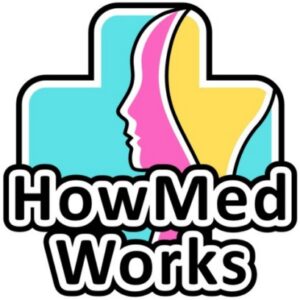
Did you know that acne affects roughly 50 million individuals each year? According to the American Academy of Dermatology (AAD) , acne is the most common skin condition in the U.S., with 85 percent of adolescents and young adults experiencing at least mild acne breakouts.
, acne is the most common skin condition in the U.S., with 85 percent of adolescents and young adults experiencing at least mild acne breakouts.
Hopefully, these statistics show you that acne is extremely common and nothing to be ashamed of. I dealt with acne for ten years so I know how tough it can be. Despite the difficult process to finally getting my acne under control, I learned a lot of information that I now get to share with you!
First, I’ll go over the answers to common acne questions. Then, we’ll discuss the six different types of acne so you can tell which type you have. This is the first step to figuring out how to treat your acne. Let’s get started. 🙂
Table of Contents
The 6 Types of Acne: Overview
To get an overview, first take a look at this chart that shows the six main types of acne and their key characteristics:
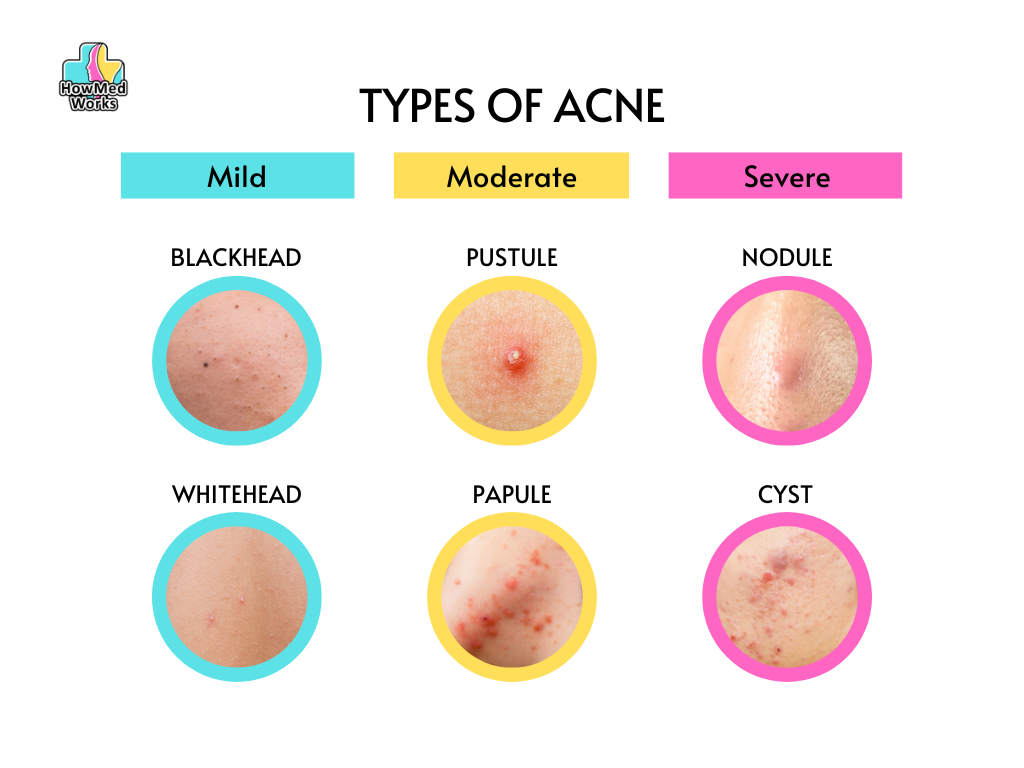
To recap, the six main types of acne are blackheads, whiteheads, pustules, papules, nodules, and cysts. Blackheads and whiteheads are small, mild forms of acne; pustules and papules are medium, moderate forms of acne; and nodules and cysts are large, severe forms of acne. Keep reading to find out more about each of these types of acne!
are blackheads, whiteheads, pustules, papules, nodules, and cysts. Blackheads and whiteheads are small, mild forms of acne; pustules and papules are medium, moderate forms of acne; and nodules and cysts are large, severe forms of acne. Keep reading to find out more about each of these types of acne!
Common Questions About Acne
What Is Acne?
According to the AAD , acne is a skin condition characterized by spots and bumps. These spots form when dead skin, excess sebum (oil), sweat, and bacteria clog the pores and hair follicles. Acne can range from mild, barely-visible spots to severe, painful cysts.
, acne is a skin condition characterized by spots and bumps. These spots form when dead skin, excess sebum (oil), sweat, and bacteria clog the pores and hair follicles. Acne can range from mild, barely-visible spots to severe, painful cysts.
Additional Information: The official medical name for acne is “acne vulgaris,” but we usually just call it “acne” for short.
Who Does Acne Affect the Most?
There are two things to consider when looking at which groups of people are most affected by acne: age and sex.
Age
In terms of age, acne mainly affects teenagers and young adults. This includes people between the ages of 12 and 24. The bright side to this is that acne tends to improve or even resolve with age for a lot of people. Keep in mind however that it’s entirely possible to have acne as an adult. As a matter of fact, adult acne is on the rise .
.
Sex
During adolescence, acne tends to affects boys more than girls. Several studies have found that 81 to 95 percent of teenage boys have acne, while 79 to 82 percent of teenage girls have acne.
have found that 81 to 95 percent of teenage boys have acne, while 79 to 82 percent of teenage girls have acne.
However, acne affects women more than men in adulthood. Findings show that three percent of adult men have acne, while up to 22 percent of adult women have acne.
show that three percent of adult men have acne, while up to 22 percent of adult women have acne.
Helpful Tip: If you have extremely persistent acne that doesn’t seem to get better no matter what you do, check out my article “The Differences Between Teenage and Adult Acne.” You might discover that you’re actually dealing with adult acne, which requires a different approach than teen acne.
Where Does Acne Typically Appear?
Acne breakouts most commonly occur on the face, chest, and upper back because there are more sebaceous (oil) glands in these regions compared to the rest of the body. The similar skin structure in these areas allow acne to develop in similar ways. More sebaceous glands means greater oil production and a higher chance of clogged pores, which causes acne.
because there are more sebaceous (oil) glands in these regions compared to the rest of the body. The similar skin structure in these areas allow acne to develop in similar ways. More sebaceous glands means greater oil production and a higher chance of clogged pores, which causes acne.
Bonus Information: There’s this concept of acne on the buttocks. While it may look like normal acne, butt acne is not true acne. Butt acne
is actually a form of folliculitis.
Folliculitis is inflammation of hair follicles, usually due to a bacterial or fungal infection. This differs from normal acne, which occurs when hair follicles become clogged by excess oil, dead skin cells, sweat, etc.
Classifying The 6 Different Types of Acne
The six main types of acne are blackheads, whiteheads, pustules, papules, nodules, and cysts. In the rest of this article, we’ll be breaking down each acne type, their level of severity, and how you can identify them. As you’ll see, the classifications of the different types of acne are largely based on appearance and how the acne is actually formed.
are blackheads, whiteheads, pustules, papules, nodules, and cysts. In the rest of this article, we’ll be breaking down each acne type, their level of severity, and how you can identify them. As you’ll see, the classifications of the different types of acne are largely based on appearance and how the acne is actually formed.
1. Blackheads
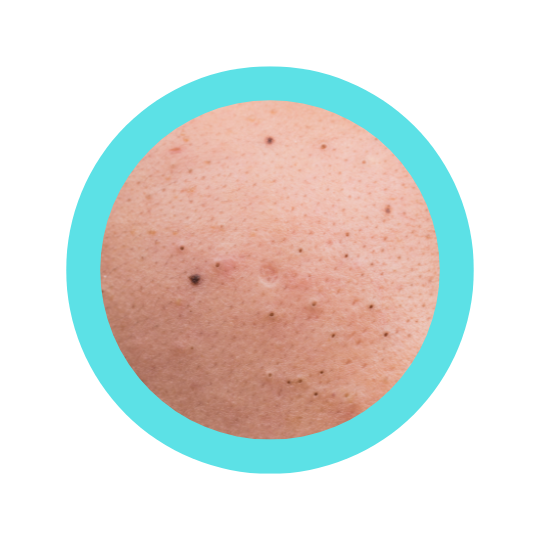
The most common type of acne is blackheads. As implied by the name, blackheads look like small black dots. Blackheads are a mild, non-inflammatory form of acne that is common in teenagers. Blackheads are also called open comedones because the pores are open to air. Exposure to air creates a chemical reaction with oxygen, causing the contents in the pore to turn black.
Fun Fact: Did you know that what most people consider to be blackheads aren’t actually blackheads at all? They’re sebaceous filaments!
Sebaceous filaments
are tiny structures inside pores that help move oil to the surface of the skin, keeping your skin moisturized and protected. These filaments are a natural, healthy part of your skin. When sebaceous filaments are more visible, they can be mistaken for blackheads.
How Do I Tell the Difference Between Sebaceous Filaments and Blackheads?
The best way to differentiate between sebaceous filaments and blackheads is to look carefully at the color. Sebaceous filaments tend to be lighter in color and/or have a clear quality to them, while blackheads actually appear black.
tend to be lighter in color and/or have a clear quality to them, while blackheads actually appear black.
2. Whiteheads
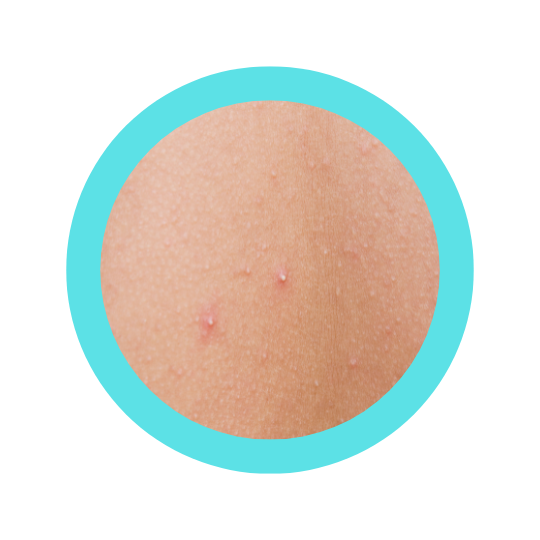
Whiteheads are small bumps that are white or yellowish in color. In contrast with blackheads, whiteheads are known as closed comedones because the pores are closed off from air by a layer of skin. Like blackheads, whiteheads are a relatively mild form of non-inflammatory acne that is common in teens.
3. Pustules

Pustules are pus-filled acne (hence the name). This type of acne is probably what comes to mind when you think of a big, poppable pimple. Acne pustules consist of larger white or yellowish bumps surrounded by red inflammation. If you have pustules, then you’re dealing with moderate, inflammatory acne.
4. Papules

Closely related to pustules are papules. Simply put, papules are pustules in their early form. Acne papules are small, solid-feeling bumps with no visible pus or poppable “head.” They may appear skin-colored, pink, red, brown, or purple.
Papules often fill with pus. Once the pus becomes visible, the blemish is considered a pustule. Like pustules, papules are considered a moderate, inflammatory form of acne.
5. Nodules

Nodules are large, painful bumps deep under the skin. They appear red and feel firm to the touch – like hard knots. Acne nodules are more commonly seen in adults than teens. Nodular acne is a severe type of inflammatory acne that can cause scarring. If you have nodular acne, you should definitely see a dermatologist because over-the-counter acne medications are ineffective at treating this type of acne.
6. Cysts
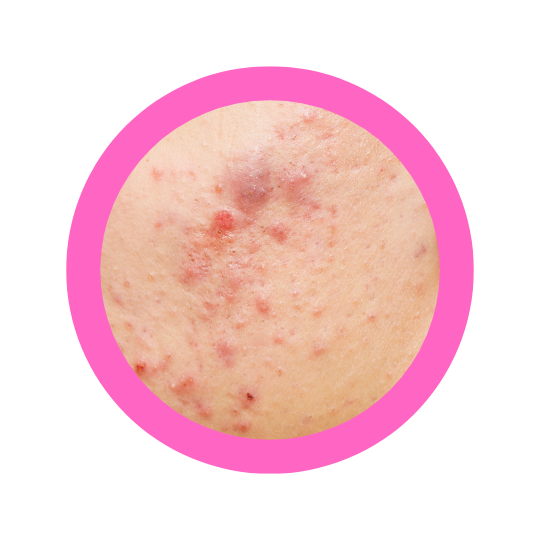
Last but not least is cystic acne. Cysts are large, painful, pus-filled lesions deep under the skin. In very severe cases, acne cysts can appear dark red or purple in color. Cystic acne is the most severe form of acne. Hormonal imbalances play a significant role so it’s most commonly seen in teens, young adults, and women. (I started getting cystic acne when I turned 19, and it was the worst acne I ever had. 🙁 )
As with any inflammatory acne, you should avoid picking at cystic acne. Attempting to pop a cyst will only result in pain, bleeding, infection, delayed healing, and permanent scarring. While it may improve with age, cystic acne does not go away on its own and requires prescription treatment. Thus, you’ll need to see a dermatologist if you have this type of acne.
Pro Tip: You’ve probably heard this a hundred times, but unless you know exactly what you’re doing, do not pop your pimples. If you absolutely can’t fight the urge, then limit yourself to extracting only blackheads and whiteheads, since they’re non-inflammatory types.
Do not attempt to pop inflammatory acne (pustules, papules, nodules, and cysts). At best, you’ll end up with more pain and redness. At worst, you’ll end up with an infection and permanent scarring.
Final Thoughts
Here’s a summary chart of the six types of acne, along with some helpful illustrations for reference:
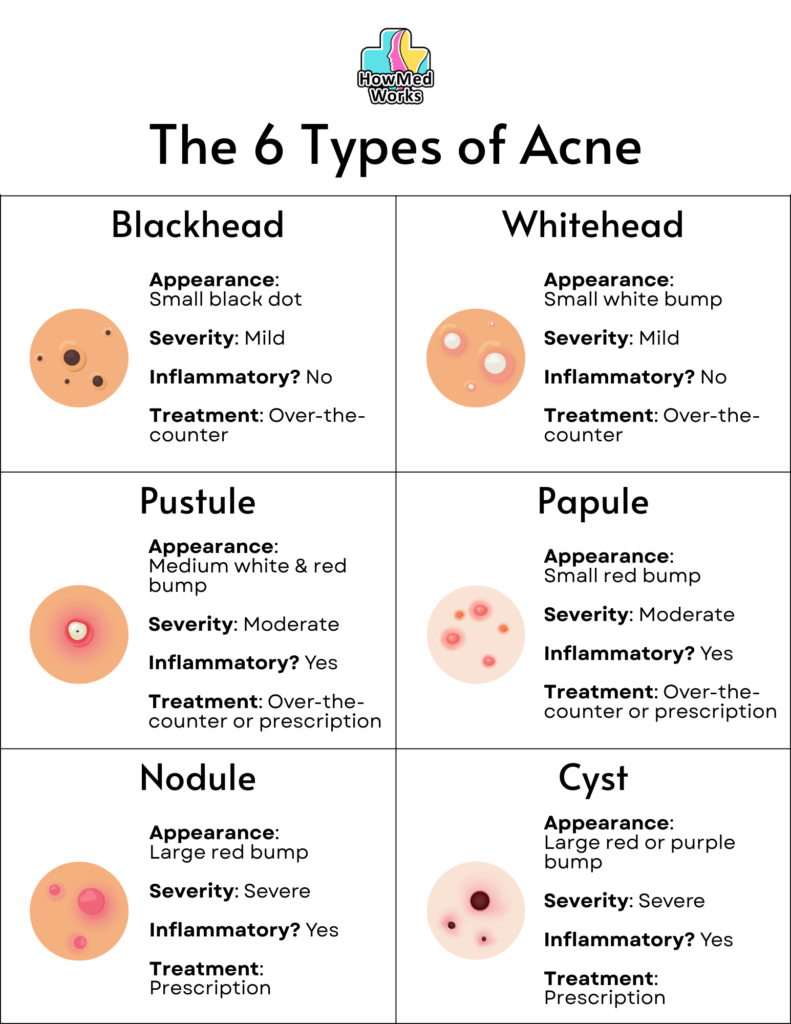
Conclusion
Nice work! Now, you have all of the information you need to figure out what type of acne you have. If you’re ready to move on to the next step, check out my article on prescription acne medications .
.
Just know that your acne – no matter how severe – is treatable. I know from personal experience just how challenging acne can be. I had teen acne that turned into severe adult acne. From childhood, it took ten years for me to figure out how to get it under control. Hopefully, I’m streamlining that process for you. See you in my next article! Stay safe and keep learning. 🙂
